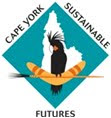An aerial baiting program aimed at saving threatened sea turtles has been successful in reducing feral pig numbers on both the west and east coast of Cape York. The program was jointly coordinated and funded by CYSF in a collaborative effort which saw Queensland Parks and Wildlife Service, Biosecurity Queensland, Apudthama Land Trust, Anggumuthi Traditional Owners, Injinoo Rangers, and CYSF all come together with a common goal to protect sea turtles. The program was based out of Heathlands National Park where baits were distributed by plane along over 150km of nesting beach. On the east coast, this will be important for reducing feral pigs prior to the summer nesting season. On the west coast, baiting occurred as a follow up to aerial culls to significantly reduce feral pig numbers. Surveys by AQIS and CYWAFAP along the west coast after the baiting program suggest that the program has been successful, with a substantial decrease in feral pigs in these coastal areas. Less pig activity should certainly see less predation on turtle nests and a chance for hatchlings to incubate and hatch.
The control of feral pigs not only protects threatened sea turtles but also provides many benefits for protection of other natural resources in the area. This includes protection of wetlands, soils, vegetation and species including waterbirds, ground mammals, crocodiles, and freshwater turtles.











No comments:
Post a Comment